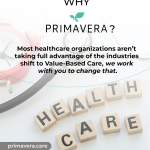The change from a fee-for-service model to a full risk model can seem daunting. After all, it is quite different in many ways. There is peace-of-mind in the fact that many organizations have done this previously and with great success.
Outside of the change in the medical organization itself, there have been efforts for many years to modernize federal laws, payment methods and incentives to benefit a value-based model. You have the technological tools and examples of many to emulate, improve upon, and to set up your medical or dental group for success.
Healthcare Industry Spending
The inefficiencies in the American healthcare system have been analyzed by countless experts in recent years. For example, the Health System Tracker experts charted the GDP per capita and health consumption spending per capita, 2017 to find that, “Relative to the size of its wealth, the U.S. spends a disproportionate amount on healthcare.” Lawmakers have been looking for new ways to cut spending and improve healthcare outcomes for quite some time.
The fee-for-service model that was once attractive to physicians made sense. You get paid for the work you do. In the end, this healthcare model created a misplaced incentive that has been linked to physician burnout, increased spending, and has not shown direct improvement in healthcare outcomes.
For those who have made the change to the Full-Risk Capitation model, the consensus among physicians is a feeling of freedom. Many doctors will tell you that although the value-based model is not perfect, it has been nice to not have to “play the games” to get paid for services rendered.
Additionally, the focus on prevention and collaboration across the care continuum is fulfilling. Instead of reviewing your monthly reports for how many services rendered, it is rewarding to see the numbers show positive healthcare trends for your patient population. It is well-documented that prevention and early detection are effective at improving patient healthcare outcomes.
Hospital Readmission Reduction Program
In 2012-2013, the Hospital Readmission Reduction Program was created by CMS, Centers for Medicare & Medicaid Services, to help mitigate the issue of very expensive readmissions to the hospital. A large number of patients were spending more time and money in the hospital than they were with their doctors for preventive care and follow-ups. To improve the patient outcomes and keep them out of the hospital for unnecessary visits, care teams implemented better post-discharge plans with a higher touch point of communication. Experts predict we will see more of these types of programs across multiple payors in the coming years. Every payor has been and will continue to look for new ways to reduce unnecessary costs when possible.
Managing the Transition from FFS to Full Risk Model
Understanding the Healthcare Metrics
First things first, you need to know if the numbers will work. If you cannot stay in business, then this won’t benefit anyone. Begin by understanding your KPIs: Funding PMPM, Inpatient/Outpatient Claims PMPM, Medical Loss Ratio (MLR), Percentage of Generic Rx, Profitability Driver (MRA), etc. These basic statistics will be your new measures for your organization’s financial success.
Using the Metrics to Effect Real Change
Second, you must understand how to effect change in these numbers. By understanding which patients are at higher risk or higher utilizers, you can make meaningful change for both the practice and the patient. Alerts, notifications, industry benchmarks, and real-time data available through data mapping with insurance companies are all key to managing a full risk capitation model. This may mean a culture shift focused on measuring the true value of a procedure and weighing the full cost (emotional stress and physical stress) to the patient before recommending.
Better Communication Tools
Third, your care teams must have access to easy communication with your patients and other medical professionals on the care team. Emailing and personal phone calls will not go away, but additional tools like telehealth need to fit seamlessly into the necessary day-to-day activities.
Tip: During this transition time, it is important to modernize your healthcare software to anticipate your new needs and overcome old hurdles.
Care Team with High Touch Points for Clinical Integration
Additionally, you need a great care team to rely upon to give comprehensive care and a good patient experience. For the full risk healthcare model to be financially successful, the healthcare outcomes must be good. For the healthcare outcomes to be good, your team must be good at communicating with your patients and following up regularly. This model performs best when care teams are in regular and consistent contact with the practice’s entire patient population.
Fee-For-Service to Full Risk Transition Solution
The latest in technology and data analysis to help with a smooth transition from fee-for-service compensation to full risk compensation is here! Primavera provides the technical and professional tools used to measure your practice’s strengths, opportunities, and partnership needs as you explore the possibilities of accountable care organizations and value-based contracting. We’ll map out the steps you need to take to transition your practice.
Step One: Obtain the financial performance of your patients, not only the clinical.
Step Two: Determine positive trends amongst different insurance companies.
Step Three: Determine your ability to negotiate higher capitation payments and either partial or full risk deals.
Step Four: Demonstrate your business’s maturity and sophistication to strategic partners including MSOs, Insurance Companies, and Capital partners or investors.
Reach out today for a practice assessment or a simple technology demonstration. With Primavera, it’s easier together.








Recent Comments